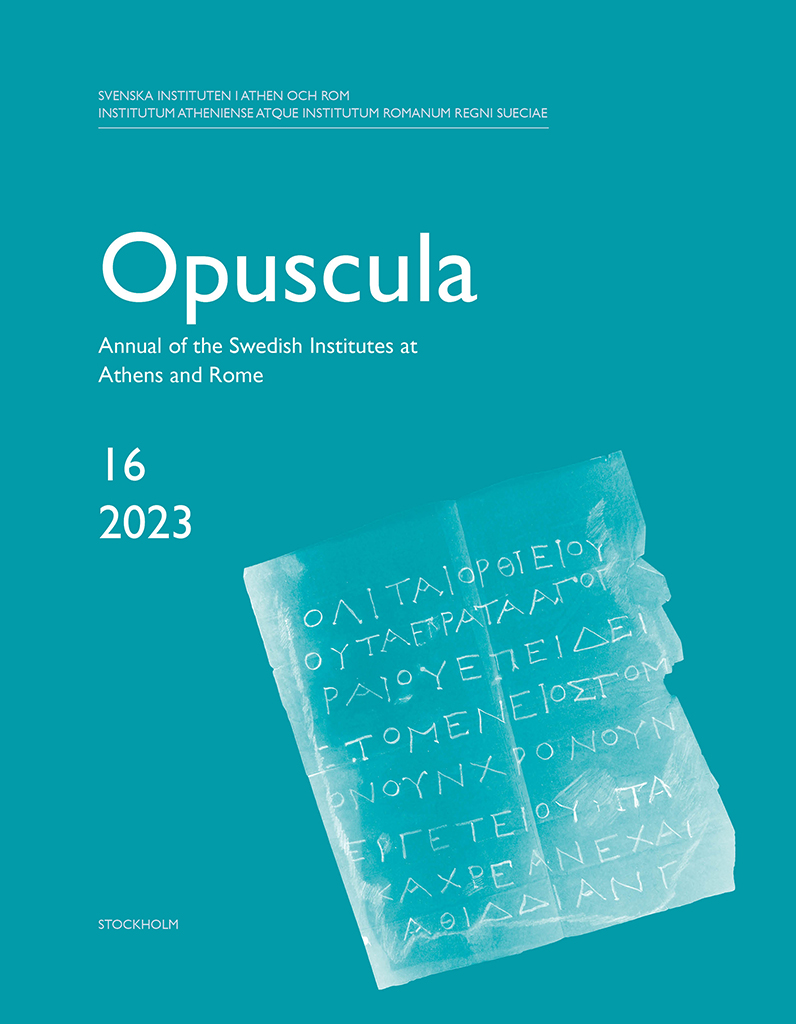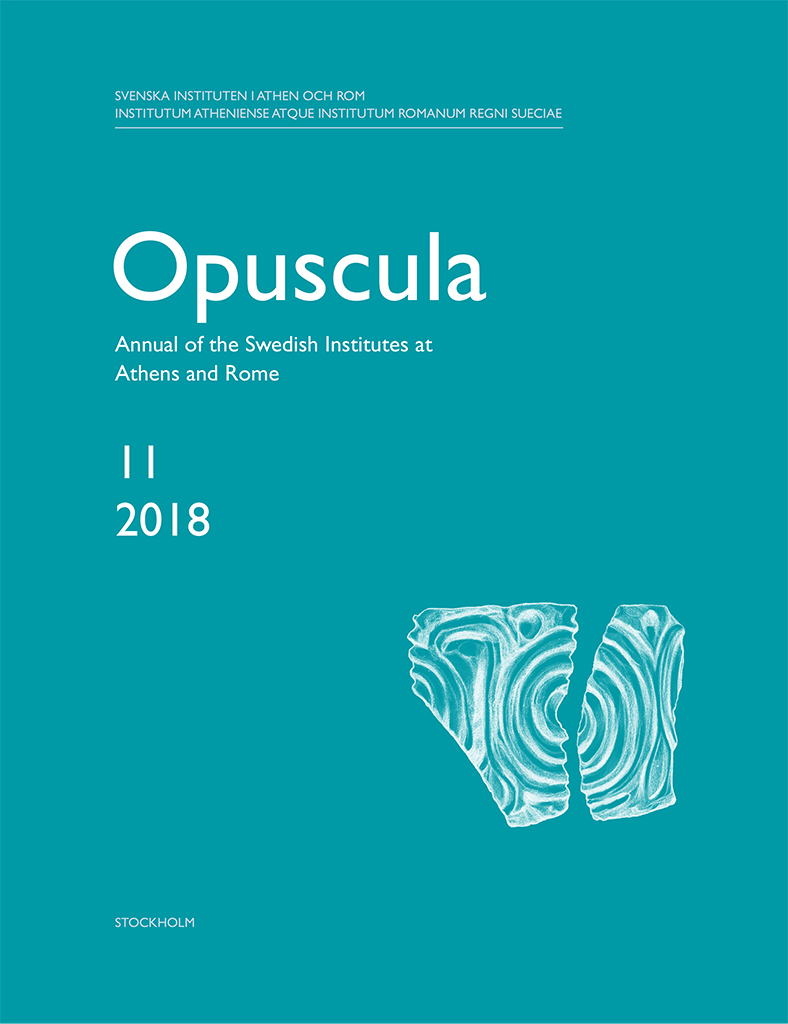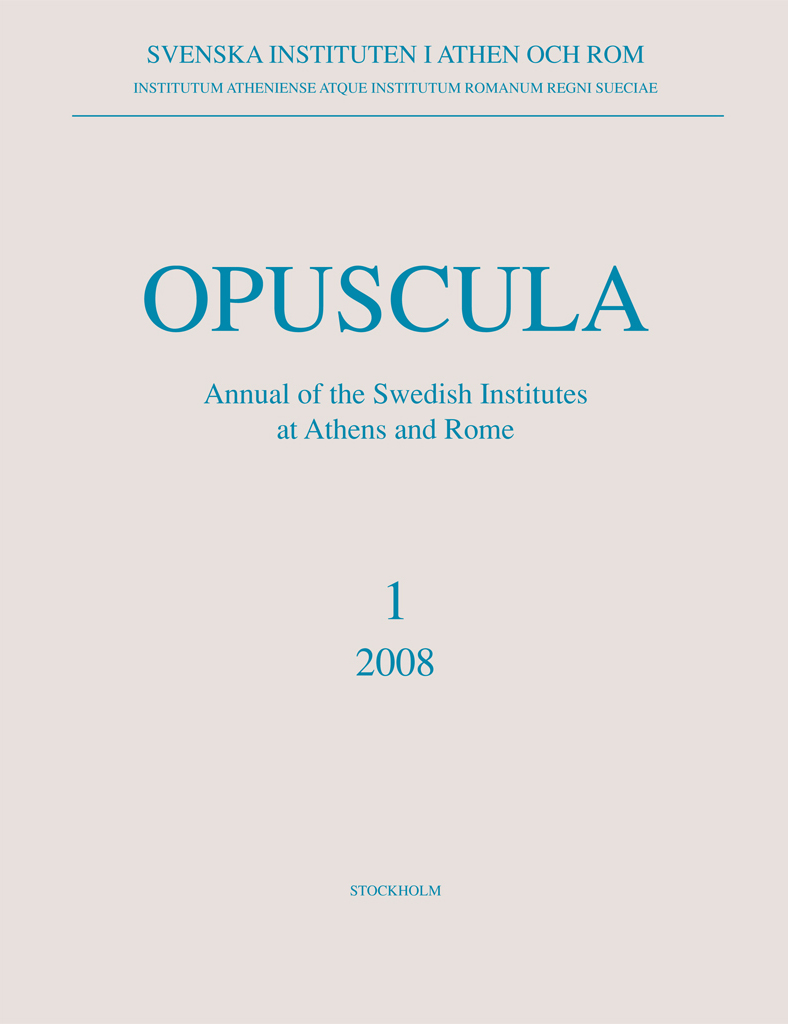Opuscula 16 is published by the Swedish Institutes at Athens and Rome. Distributed by Eddy.se AB. View volume at ERIH PLUS. All content available with open access. The Palamas Archaeological Project. A preliminary report of the 2022 fieldwork conducted by the ongoing Greek–Swedish archaeological field programme in Palamas, region of Karditsa, Thessaly By Maria Vaïopoulou, Robin Rönnlund, Fotini Tsiouka, Johan Klange, Derek Pitman, Rich Potter, Ian Randall, Harry Manley, Elisabet Schager, Sotiria Dandou & Lewis Webb Abstract This paper presents the preliminary results from the 2022 fieldwork of the Palamas Archaeological Project, an ongoing Greek–Swedish collaboration in the region of Karditsa, Thessaly. Working over the course of two separate field seasons, the project team conducted aerial, architectural, fieldwalking, and geophysical surveys at a number of sites within the survey area, including at the important multi-phase fortified settlements at Metamorfosi and Vlochos. Limited excavations were also conducted at the latter site, producing new evidence for the Hellenistic and Early Byzantine phases of the ancient city, including a probable cemetery. The work continues to add to the knowledge of the archaeology of the region, highlighting the long and dynamic history of human habitation in western Thessaly. Bibliographical information Maria Vaïopoulou, Robin Rönnlund, Fotini Tsiouka, Johan Klange,…
Opuscula 11 (2018) is available for purchase at Amazon.com, Adlibris, Bokus and bokorder.se. Distributed by eddy.se ab. The New Swedish Cyprus Expedition 2017: Excavations at Hala Sultan Tekke (The Söderberg Expedition). Preliminary results By Peter M. Fischer (University of Gothenburg) & Teresa Bürge (Austrian Academy of Sciences). With contributions by Magda Ausiayevich, Bebelyn Placiente Robedizo, Victor Barrera Alarcón, Laerke Recht & Dominika Kofel. Abstract During the eighth field season at the Bronze Age city of Hala Sultan Tekke, excavations in City Quarter 1 (CQ1) exposed massive industrial and domestic structures belonging to three phases of occupation (Strata 3–1) dating to the 13th and 12th centuries BC (LC IIC–IIIA). Georadar survey, penetrating to a maximum depth of approximately 1 m, guided the excavation of walls of Strata 1–2, both of which were destroyed by conflagration. Excavations 1.5–2 m below the surface and also below the maximum penetration depth of the radar revealed a heretofore buried phase of occupation with substantial architectural units. For the first time, massive Stratum 3 structures with a markedly different building technique were exposed. Copper smelting installations, much ash and slag, and storage facilities also belong to this phase of occupation. Additional excavations guided by results from…
Opuscula 1 (2008) is out of print. Available for free download at Bokorder.se. Used copies might be available at Amazon.com and Amazon.de. Epineia kai limenes: the relationship between harbours and cities in ancient Greek texts By Anton Bonnier Abstract The aim of this article is to explore the relationship between harbours and cities as presented in literary sources dating primarily to the Archaic and Classical periods. Although it has been recognized that access to the sea and sailing routes was of great importance for the economic and political life of ancient Greek city-states, there have been few studies of the relationship between cities and harbours, and in particular of the emblematic role played by harbours within literary sources. Harbours are often presented as extramural entities in relation to cities and although urban centres would depend on harbours for the import and export of goods, and for maintaining navies, the relationship between harbours and cities is not unproblematic if we look at what harbours signify within these texts. Bibliographical information Anton Bonnier, ‘Epineia kai limenes: the relationship between harbours and cities in ancient Greek texts’, Opuscula. Annual of the Swedish Institutes at Athens and Rome (OpAthRom) 1, 47–61. Stockholm 2008….



